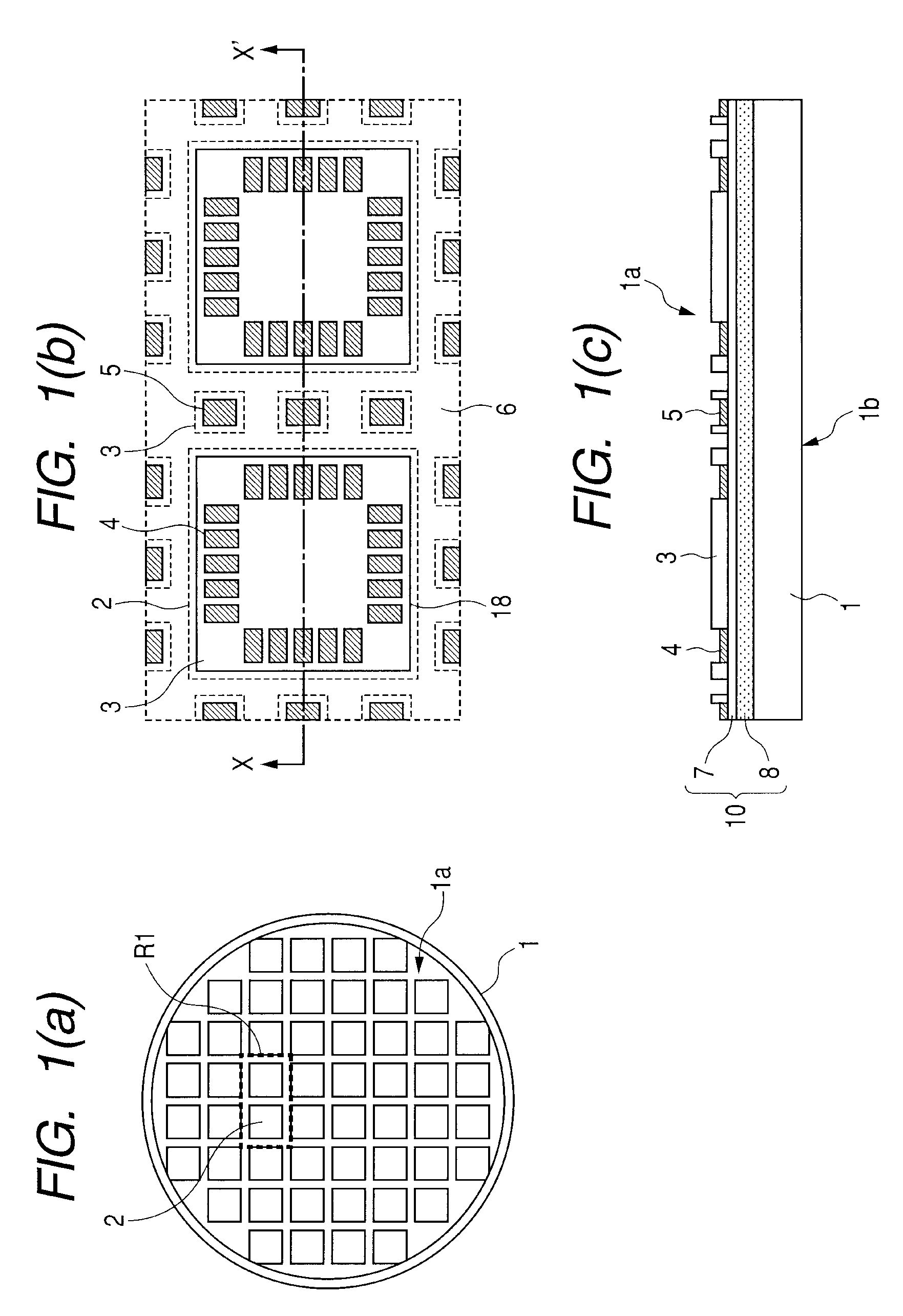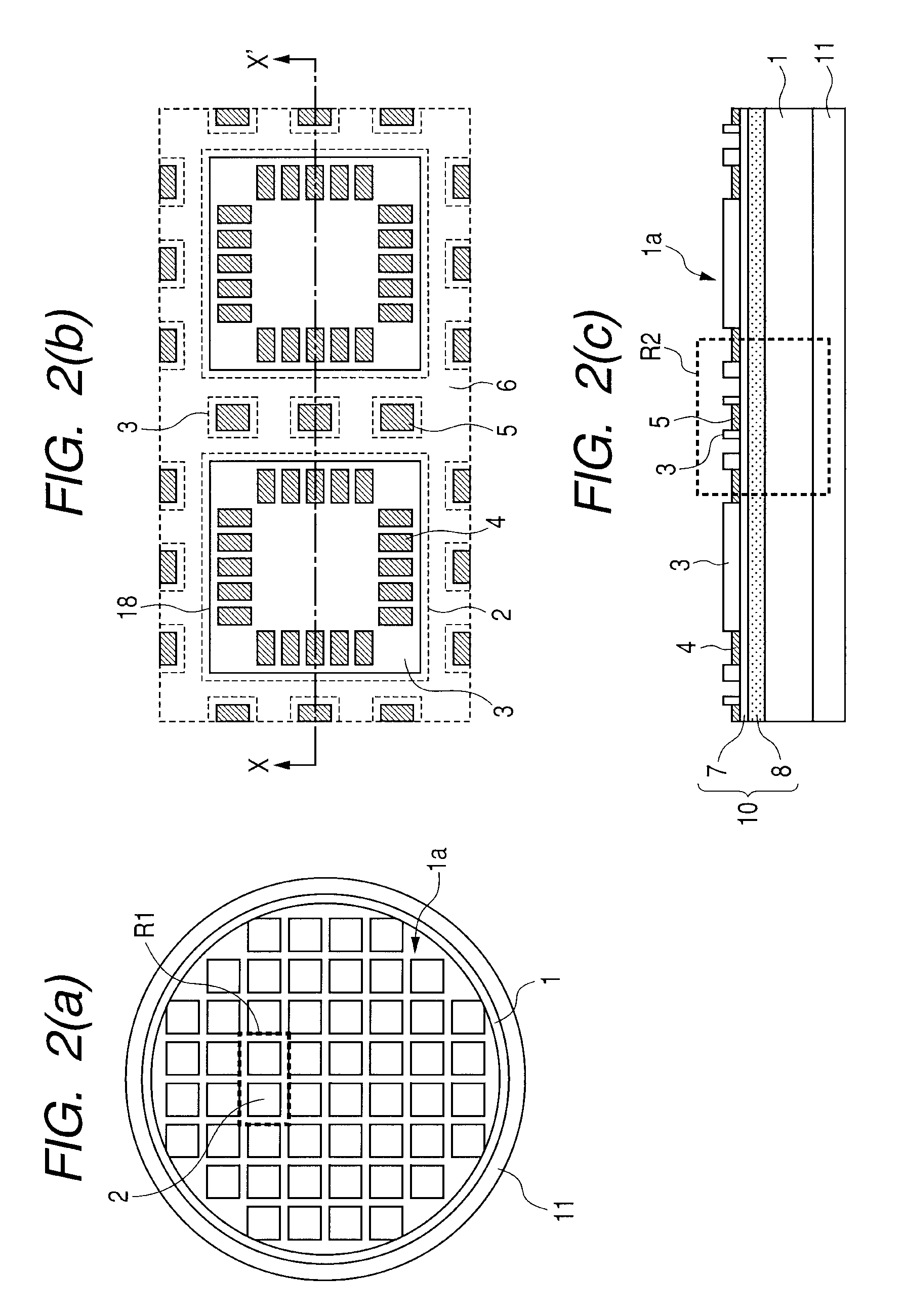Semiconductor device and manufacturing method of the same
a semiconductor and manufacturing method technology, applied in the direction of semiconductor devices, semiconductor/solid-state device details, electrical devices, etc., can solve the problems of more fragile structure and porous low-k materials, and achieve the effect of small blade width
- Summary
- Abstract
- Description
- Claims
- Application Information
AI Technical Summary
Benefits of technology
Problems solved by technology
Method used
Image
Examples
Embodiment Construction
[0056][Outline of Embodiments] First, the outline of typical embodiments of the invention disclosed herein will be described.
[0057]1. A manufacturing method of a semiconductor device comprising the steps of: (a) preparing a semiconductor wafer having a main surface, a plurality of device regions formed over the main surface, a dicing region formed between the device regions, and a back surface on a side opposite to the main surface; (b) in the dicing region of the semiconductor wafer, inserting a first dicing blade into the semiconductor wafer from the main surface side to the back surface side of the semiconductor wafer and causing the first dicing blade to run along the dicing region, thereby forming a dicing groove in the main surface of the semiconductor wafer (or dicing the main surface); (c) after the step (b), inserting a second dicing blade into the dicing groove from the main surface side of the semiconductor wafer and causing the second dicing blade to run along the dicing...
PUM
| Property | Measurement | Unit |
|---|---|---|
| end-face angle | aaaaa | aaaaa |
| dielectric constant | aaaaa | aaaaa |
| angle | aaaaa | aaaaa |
Abstract
Description
Claims
Application Information
 Login to View More
Login to View More - R&D
- Intellectual Property
- Life Sciences
- Materials
- Tech Scout
- Unparalleled Data Quality
- Higher Quality Content
- 60% Fewer Hallucinations
Browse by: Latest US Patents, China's latest patents, Technical Efficacy Thesaurus, Application Domain, Technology Topic, Popular Technical Reports.
© 2025 PatSnap. All rights reserved.Legal|Privacy policy|Modern Slavery Act Transparency Statement|Sitemap|About US| Contact US: help@patsnap.com



